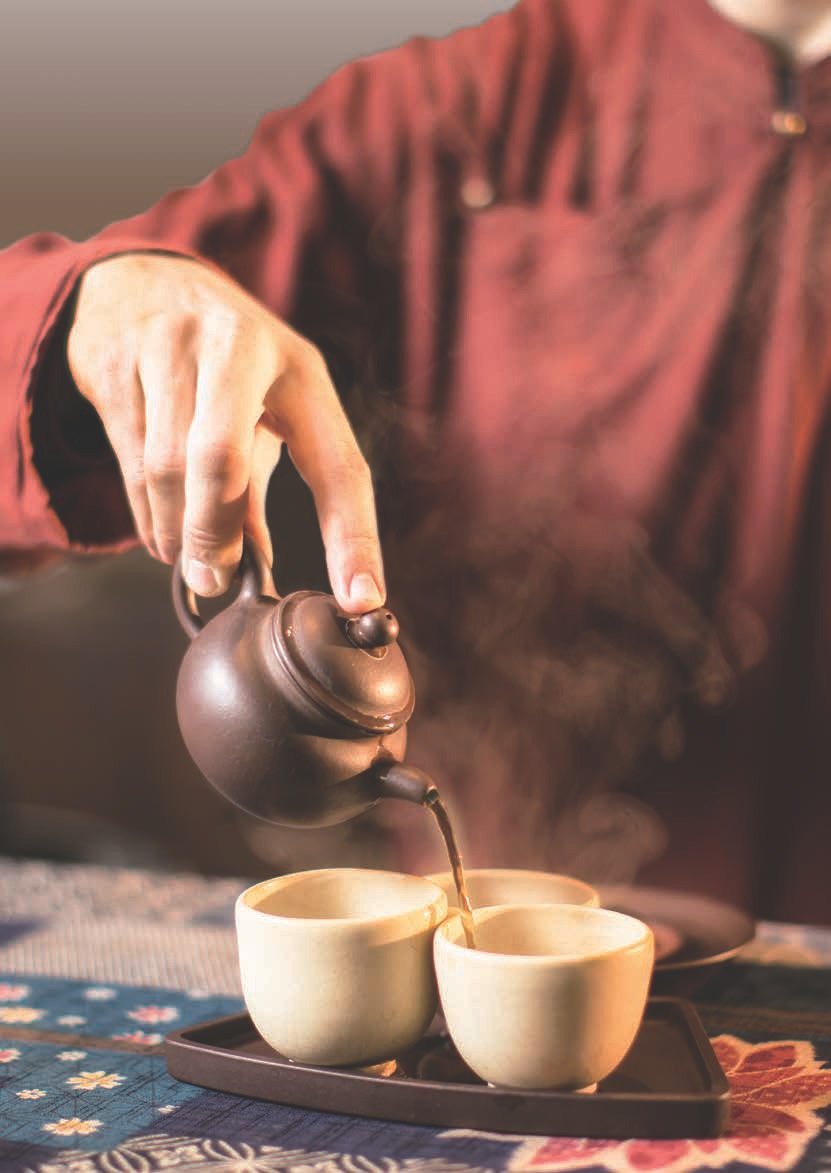
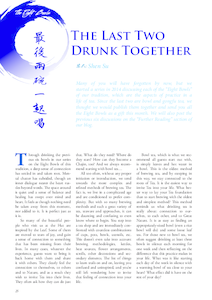 |
|
Through drinking the previous six bowls in our series on the Eight Bowls of this tradition, a deep sense of connection has settled in and taken root. Mental chatter has subsided, though an inner dialogue nearer the heart rustles beyond words. The space around is quiet and a sense of balance and healing has swept over mind and heart. It feels as though nothing need be taken away from this moment, nor added to it. It is perfect just as it is.
So many of the beautiful people who visit us at the Hut are inspired by the Leaf. Some of them are moved to tears of joy, and gain a sense of connection to something that has been missing from their lives. In many cases, whatever the experience, guests want to bring it back home with them and share it with others. They clearly feel the connection to themselves, to others and to Nature, and as a result they wish to invite Tea into their lives. They often ask how they can do just that. What do they need? Where do they start? How can they become a Chajin, too? And we always recommend starting with bowl tea...
All too often, without any proper initiation or introduction, we tend towards the more complex and refined methods of brewing tea. The fact is, we live in a complicated age and are conditioned to prefer complexity. But with so many brewing methods and such a great variety of tea, teaware and approaches, it can be daunting and confusing to even know where to begin. You step into a tea shop and are immediately confronted with countless combinations of cups, pots, bowls, utensils, etc. This doesn't even take into account brewing methodologies, kettles, heat sources, flower arrangements, scrolls, other decorations and secondary elements. The list of things to learn trails on and on, leaving you confused and uninspired, and you're still left wondering how to invite that feeling of connection into your life.
Bowl tea, which is what we recommend all guests start out with, is simply leaves and hot water in a bowl. This is the oldest method of brewing tea, and by steeping in this way, we stay connected to the roots of Tea. It is the easiest way to invite Tea into your life. What better way to lay your Tea foundation than to start brewing with the oldest and simplest method? This method reminds us what drinking tea is really about: connection to ourselves, to each other, and to Great Nature. It is as easy as finding an appropriately-sized bowl (even a rice bowl will do) and some loose leaf tea. For those new to bowl tea, we often suggest drinking at least three bowls in silence each morning for one week and then reflecting on the difference that this practice makes in your life. What was it like starting each day of the week in silence with a warming bowl of tea close to your heart? What effect did it have on the rest of your day?
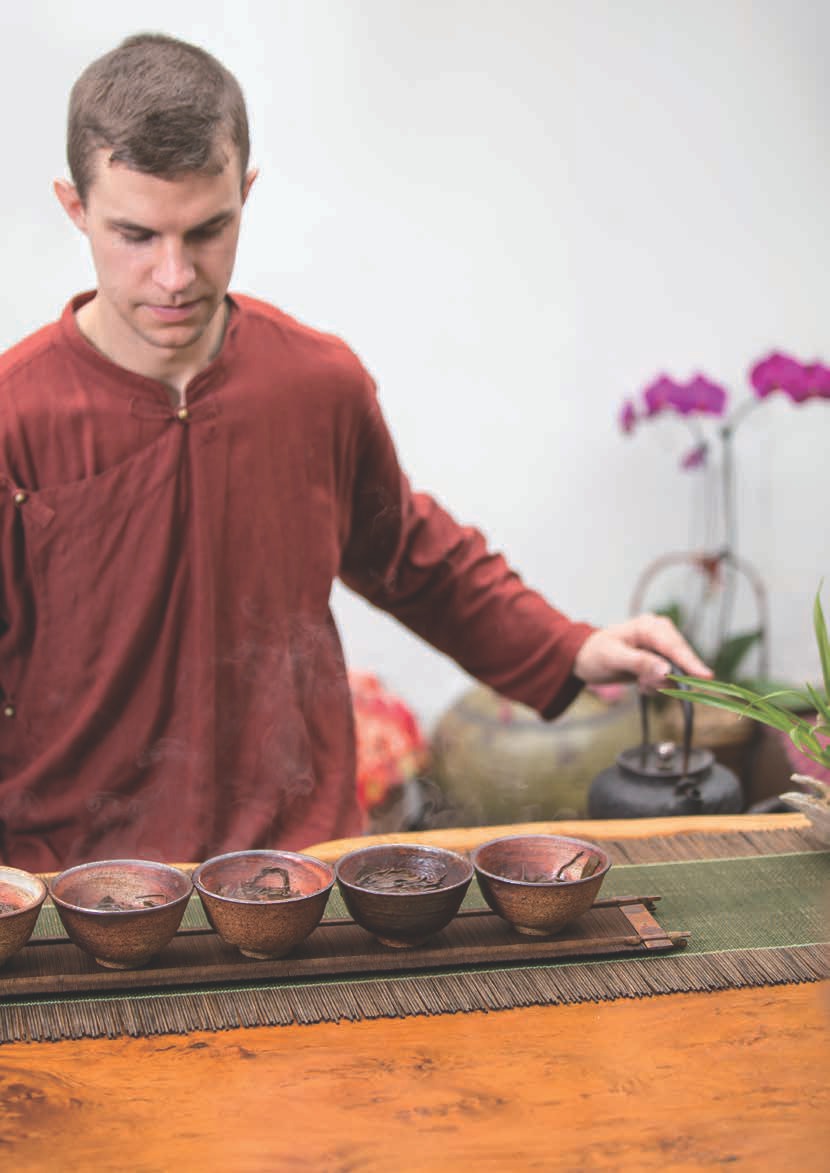
There are five main brewing methods in this tradition. Many of you who have visited us have experienced all five of them. If you have, you may remember that bowl tea accounts for three of the five brewing methods. The other two methods are gongfu tea and whisked tea. Bowl tea has been subdivided into three of the brewing methods mainly because of the changes in tea processing over the years. True bowl tea is simply leaves and hot water in a bowl. As time went on, different processing methods gave rise to a larger range of finished teas. Some processing methods result in smaller, curled leaves or compressed leaves, many of which aren't suitable for placing into a bowl and adding hot water, as is the nature of bowl tea. In order to brew such teas with the essence of simplicity, certain adaptations were made. Most notably, the side-handle tea pot was introduced. In that way, the greater variety of teas produced these days can still be enjoyed bowl style. In the third style, we boil certain teas in larger side-handle pots or kamas and then pour or ladle the tea into bowls. You can watch all three of these brewing methods on our Youtube channel.

Bowl tea is about equanimity and balance. It symbolizes surrender to the way things are. There is no "right" or "wrong" in bowl tea. The tea is just as it should be and can be freely adjusted bowl by bowl, ceremony by ceremony. It gives us the chance to set aside our discriminating mind, to let go of the human elements that can at times get in the way, and remember what we are really here for - connection! And when it comes to connection, heart is what really matters. It's not what we do, but how we do it, and so brewing tea with one's heart is at the core of bowl tea. The intention with which we brew and share tea plays a far greater role than our brewing skills, in other words.
There are many times when the ability to let go and just enjoy tea as it is becomes very useful. And in those situations, having a bowl tea practice will serve you well. For example, say you find yourself returning home to visit your family, and in an attempt to catch up with her son or daughter, your mother offers you a mug with hot water and a tea bag steeping inside. It's possibly over-steeped, and the water was probably scalded... and is that a Starbucks mug? But then it hits you: it's not over-steeped, the water isn't scalded and the mug doesn't matter; it's actually your mother trying to connect with her son or daughter over a cup of tea! None of the brewing parameters matter. The temperature of the water, amount of leaf, length of infusion, and so on, all have no bearing on the ability to connect with family. The mother in this example surely wasn't trying to demonstrate her tea brewing skills. The tea in that moment was perfect just the way it was because it was being used as a medium for connection, as it has been for thousands of years.
Too much bowl tea, however, leads to lazy brewing. Tolerance is a good attitude, but it is not a Way of Life, a Dao. I don't say this lightly, because as a student of tea I am currently finding that fine line between tolerance and setting boundaries - bowl tea and gongfu tea. We don't simply cast aside all form and structure when it comes to bowl tea. Otherwise, why not just drink tea in a dumpster from a broken, dirty bowl? We can skillfully draw certain lines, and there are other brewing methods that help us find balance between equanimity and sensitivity.
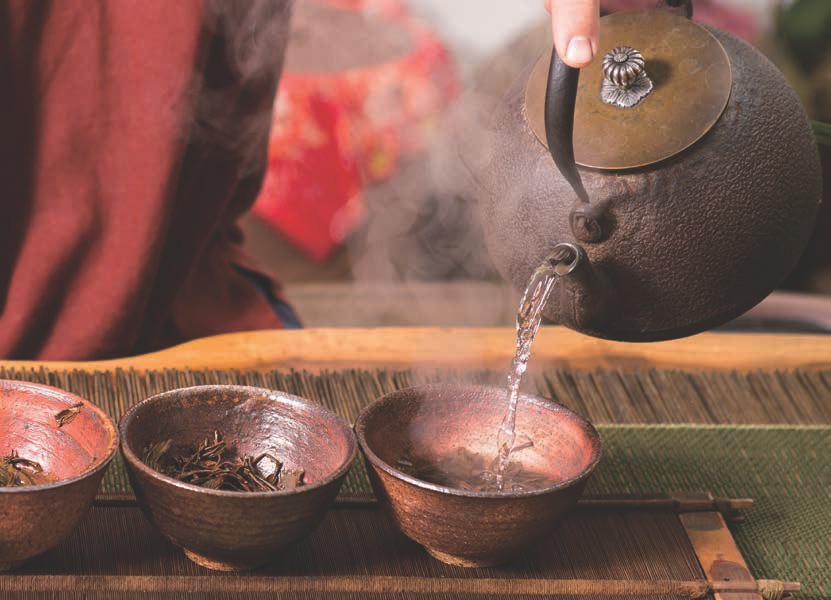
One final thing to remember is that it is important to maintain contact with the practice of bowl tea throughout a life of tea. It is not a method to simply start with and then set aside. Advanced techniques are basics techniques mastered. Bowl tea is only one of the wings on the bird of enlightenment and must be in balance with the other: sensitivity. It is important to always return to our roots and be reminded of what we're really here for, especially when we feel lost or out of balance. It is often said around here that we have never lost our connection to Nature, but rather the feeling of connection to Nature. Calm your mind, take a few deep breaths, and bowl by bowl let that feeling return to you...
It is powerfully humbling to know that leaves and hot water placed in a bowl, as you are doing, was practiced thousands of years ago. Let that thought inspire you! May each bowl bring you closer to that feeling of connection that is never lost! Remember, there is always a bowl of tea waiting for you here at our Center. May that thought warm you when you are cold, delight you when you are sad, awaken you when you are tired, and motivate you to make time and space for Tea in your life. I raise my bowl and offer it to you now as a reminder that life itself is an offering to Great Nature.
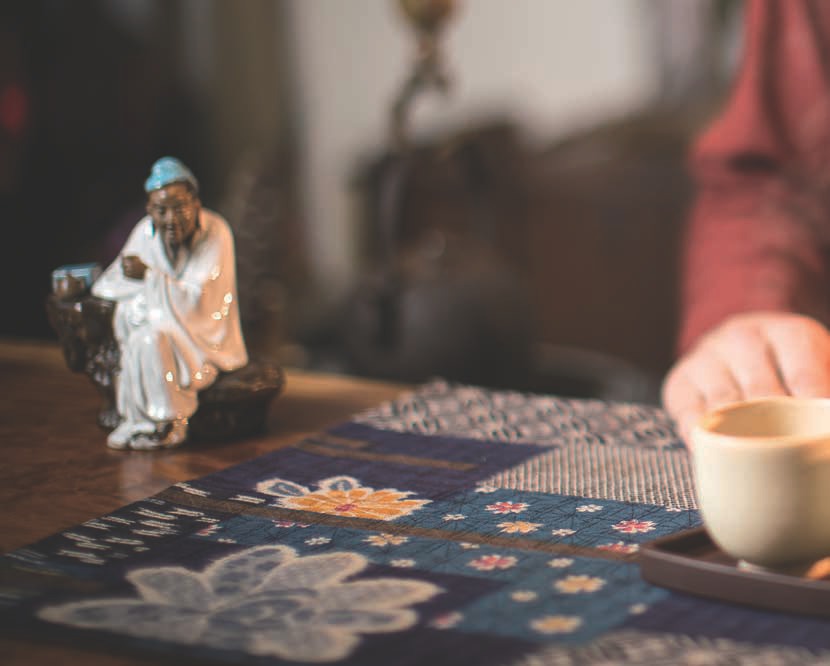
Gongfu tea is a mastery of tea brewing achieved through self-discipline. It is the eighth (and final) bowl of a life of tea. Does this mean we've reached the end? Have we summited the peak of the mountain, left the world of dust behind and achieved the pinnacle of Cha Dao? Is it time to enjoy the finest cups of tea, one after the other, and never look back? Or... is this the very beginning? The very start of our journey returned? The top of the mountain may bring with it perspective, but we must ultimately head back down into the valley below and put that perspective into practice. In Zen, it is said that in order to climb the mountain, we must start at the peak, asking ourselves what the true goal is...
In this tradition, we welcome Tea into our lives by starting with bowl tea and then slowly progressing towards gongfu tea: towards brewing tea with grace and beauty in a way that transcends the ordinary. The aim is not to move from one brewing method to the next, treating it as a means to an end in some hierarchical system of achievement. It is not as if we graduate from bowl tea and then move on to gongfu tea, though it is important to start with bowl tea to build the foundation that connects us to the Spirit of the Leaf upon which we can then develop the skills necessary to brew gongfu tea. And when that time comes, and one begins one's journey into the grace and beauty of gongfu tea, it is also important to see how it complements the other brewing methods and other aspects of a life of tea to bring about balance. For gongfu tea is the externalization of the inner harmony cultivated in bowl tea. That stillness and alertness found within yourself during bowl tea is then translated through the slow, gentle, graceful movements of gongfu tea.
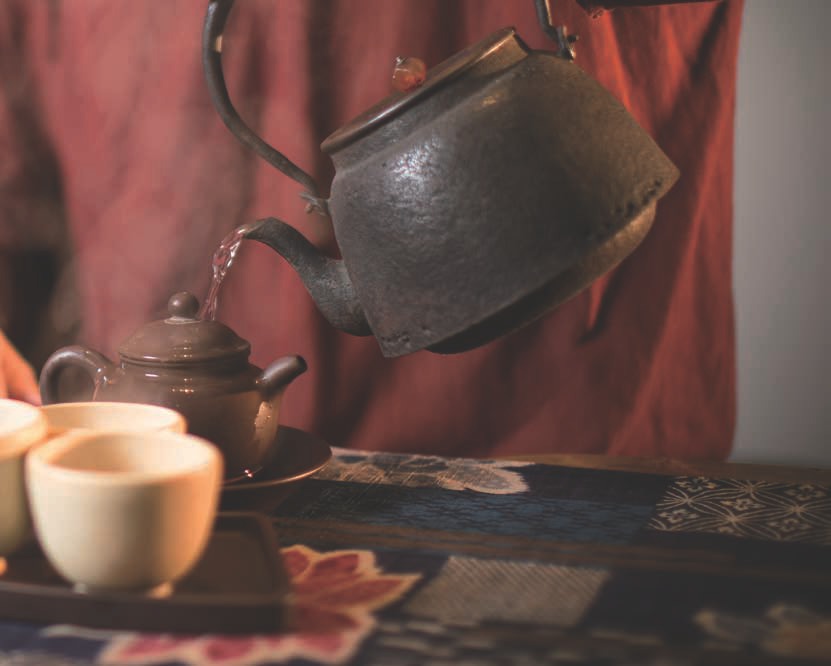
With the attention to detail required to brew a really fine cup of tea, it can seem like the very beginning of something that will take a lifetime of self-discipline to master. How honored are we that such a brewing method, refined over hundreds of years, is still available to us now, passed down and preserved from teacher to student, giving us yet another beautiful means by which to serve an awakening of presence through tea!
Mastery comes through participation. If you only ever read or watch videos about serving tea, you will never develop the skills necessary to brew finer and finer tea. My teacher says, "the extent that you participate is the extent that you can master something." Gongfu tea is about mastery, and as important as a firm intellectual understanding of it is, it is a poor substitute for even the smallest bit of participation. The extent that I participate in gongfu tea is the extent that I can master it.
But mastery towards what aim? This is a tradition of service, and mastery without the concept of service is empty (and not in the insightful Buddhist sense of the word). Service is quite possibly the core concept of mastery, for what good would any form of mastery be if it weren't used in service for the benefit of others? What good would it be to master anything and then take it to the grave with you? In fact, the only way mastery can ever reach its full potential is when it is shared in service to others.
My teacher says there is a misconception that mastery is about control and that more and more control means more and more mastery. In a crude analogy, we could say that control allows you to navigate a river in any direction you please with a great input of finite energy. Mastery, however, allows you to harness the energy of the river itself and become a part of its limitless flow! Not necessarily going where you want, but wanting to go with the natural flow of the river - in other words, becoming the river. Mastery is about becoming the very thing you do and communing with your environment as opposed to controlling it.
Practically speaking, gongfu tea seems to require a great deal of control, as you poor the kettle, steep the tea, hand out the cups, discard the waste water and so on. And in the beginning, control may indeed be an essential aspect of learning to prepare tea this way, but mastery will then be about becoming gongfu tea and learning to brew the tea the way it wants to be brewed. There is a big difference between the one who makes gongfu tea and the one who is gongfu tea - the one who controls the process and the one who lets the tea brew itself.
Nowadays, with so much access to information and experiences, it's difficult to focus on one activity and become a master of anything. It's all too easy to accumulate hobbies and experiences, unfortunately becoming a tourist of everything and a master of nothing. There was a time when most people were masters of what they did, and loved what they did. It was about taking the time and doing what they loved slowly and properly. Doing what we love shouldn't be diluted by making it quicker and more convenient, but rather slowed down and appreciated through more participation. Why would anyone want to speed up what they love doing? If it really is something you love, wouldn't you rather it be done slowly and properly? And tea is all about slowing down. The faster we move from task to task, the more energy we waste thinking about what to do in an imaginary future. Gongfu tea teaches us to be present unto what is in this moment! As the Old Sage says, "Nature is not in a hurry, yet everything is accomplished."
In a more linear sense, the aim of gongfu tea is about brewing the finest cup of tea possible, brewing the tea to its highest potential and appreciating all the fine qualities it has to offer. Master Lin says that by preserving temperature and disturbing the tea as little as possible with slow and gentle movements, we "steal" its essence. This means that the tea releases itself slowly, gently and gracefully over the session. By preparing the tea this way, we not only increase our sensitivity and learn to brew and appreciate finer and finer cups of tea, but we start a dialogue with the Leaf that reminds us to learn to brew the tea the way it wants to be brewed, as opposed to how we want to brew it.
This practice is not just about understanding and cultivating the skills to brew a fine cup of tea. I have good tea and teaware and I know the mechanics of brewing gongfu tea well, but my master still brews tea far better than I. It's not so much in knowing your tea or teaware as it is in knowing yourself. As Master Lin often says, "If you want to brew tea well, you must first learn to be a person."
Wu De often says that the point at which tea becomes a Dao is when you realize that in mastering tea I am mastering myself! It is about carrying that which I cultivate at the tea table out into as many daily activities as possible. Then, ultimately, as I learn to brew tea with grace, I am in turn leaning how to live a life in grace.

